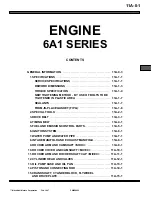
Mechanical mounting
5.3 Mounting/dismantling the rotor
1FE1 synchronous built-in motors
64
Hardware Installation Manual, 12/2016, 610.43000.40b
5.3.4
Compensating mechanical stresses and deformations of the spindle shaft
The thermal joint causes stresses (pressing) by the fit interference of the spindle shaft.
These stresses can deform the spindle shaft.
Note
The following stress compensation is possible only for mounted rotors with sleeve.
After joining, a destressing of the spindle shaft with oil pressure for stress compensation or
for reducing the spindle deformation is recommended.
WARNING
Danger to life caused by oil under high pressure
The spurting of oil and/or mechanical damage at the hydraulic system can cause death or
severe injuries.
•
Use only intact devices and resources for destressing.
•
Observe the prescribed pressures.
Forcing oil between the spindle shaft and the rotor core releases the step press fit.
If the pressure is sufficient, the spindle shaft will slide off the rotor core.
●
Prevent axial relative movements during the destressing (see "Mechanical stress
compensation" figure).
Safety measures for the stress equalization
●
Check the pump and accessories for functional safety.
●
Operate the pump only with manometer.
●
Do not make any changes to the device and its safety equipment.
●
Observe the notes contained in the oil press pump operating instructions.
●
Wear a face protective mask and closed work clothes.
●
Vent the hydraulic system.
The oil pressure is built up manually.
●
Do not exceed the maximum permissible oil pressure See the following table.
Table 5- 3
Maximum permissible oil pressure
Motor type
Maximum oil pressure P
max
[MPa]
1FE105□
-6W
100
1FE106□
-
6W, 1FE108□
-
6W, 1FE109□
-4W,
1FE109□
-
6W, 1FE111□
-
6W, 1FE114□
-8W,
80
1FE1 Rotor cores without rotor sleeves
No oil press fit
















































